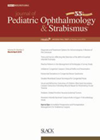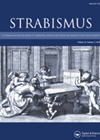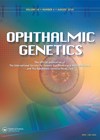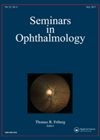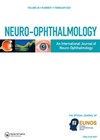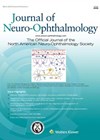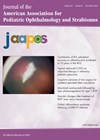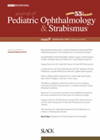
Journal Reviews
Use of control scores for intermittent exotropia
This study surveyed paediatric ophthalmologists to determine their use of the Newcastle, PEDIG and LACTOSE control scores in the diagnosis and management of intermittent exotropia. The authors aimed to identify how frequently control scores are used clinically, the barriers to...
Combined in-office and home-based eccentric viewing training for central vision loss
This retrospective study aimed to investigate the effectiveness of an eccentric viewing training (EVT) programme delivered in a real-world setting (home exercises) by combining a traditional EVT technique with biofeedback training using microperimetry. The authors investigated potential relationships between visual...
Dichoptic vs occlusion therapy outcomes for anisometropic amblyopia
The authors evaluated a binocular Tetris game for Android phones and compared its effectiveness, compliance and adverse events with part-time patching in children with anisometropic amblyopia. This was a prospective randomised study. Group 1 played the game for two hours...
PRPF31-related retinitis pigmentosa and asymptomatic carriers
The authors present a study of 21 patients with variants in the PRPF31 gene classified as pathogenic or likely pathogenic. These variants are caused by autosomal dominant retinitis pigmentosa (RP-11). Between January 2020 and November 2021 patients underwent tests of...
Inverted internal limiting membrane flap vs internal limiting membrane insertion technique for large macular holes
This meta-analysis aimed to compare and evaluate the morphological and functional outcomes between the inverted internal limiting membrane (ILM) flap and ILM insertion techniques in the treatment of large macular holes (MHs). The primary outcome measures were defined by the...
Do occult neuroretinitis and non-arteritic anterior ischaemic optic neuropathy differ in presentation?
This study evaluates differences between neuroretinitis and non-arteritic anterior ischaemic optic neuropathy (NAAION) in terms of patient demographics, clinical presentation, and optical coherence tomography (OCT) findings. Medical records of patients with a final diagnosis of occult neuroretinitis or NAAION were...
A review of neuro and retinal imaging findings in Alzheimer’s disease
The authors present a systematic review with the aim of assessing the relationship between retinal and cerebral changes in Alzheimer’s disease (AD), mild cognitive impairment and pre-clinical AD. A total of 23 articles met the inclusion criteria of the review,...
Does the length of the school day have a role in age of myopia onset?
The authors prospectively collected the refractive data of myopic adults attending recruiting dispensing optician or ophthalmologist sites. Participants were recruited consecutively, giving verbal informed consent. Sites included a mix of urban and rural areas across eight sites. The following data...
BTA injection to treat convergence insufficiency
The outcomes of patients with convergence insufficiency (CI) treatment with botulinum toxin A (BTA) in one or both lateral rectus muscles are reported. This was a retrospective study of 23 patients; eight males, 15 female, mean age 59 years (range...
Outcomes of suture-less vs. sutured wound closure for paediatric cataract surgery
In this study the authors aimed to compare the incidence of postoperative complications between cases of suture-less and sutured wound closure in paediatric cataract surgery. This was a retrospective study of children aged <18 years and included 116 eyes of...
Psychological approach to treatment of accommodative / convergence anomalies
A case series is presented of affected children, young people and young adults with discussion of a psychological approach to aiding their accommodative problems. The psychological approach involved an information sheet provided at the end of assessment which included explanations...
Effectiveness of supramaximal horizontal surgery for third nerve palsy
The purpose of this study was to present the outcomes and progress of third nerve palsy cases after supra-maximal recession / resection. The aim is for an initial overcorrection of 15-25PD at day one. This was a retrospective study of...

